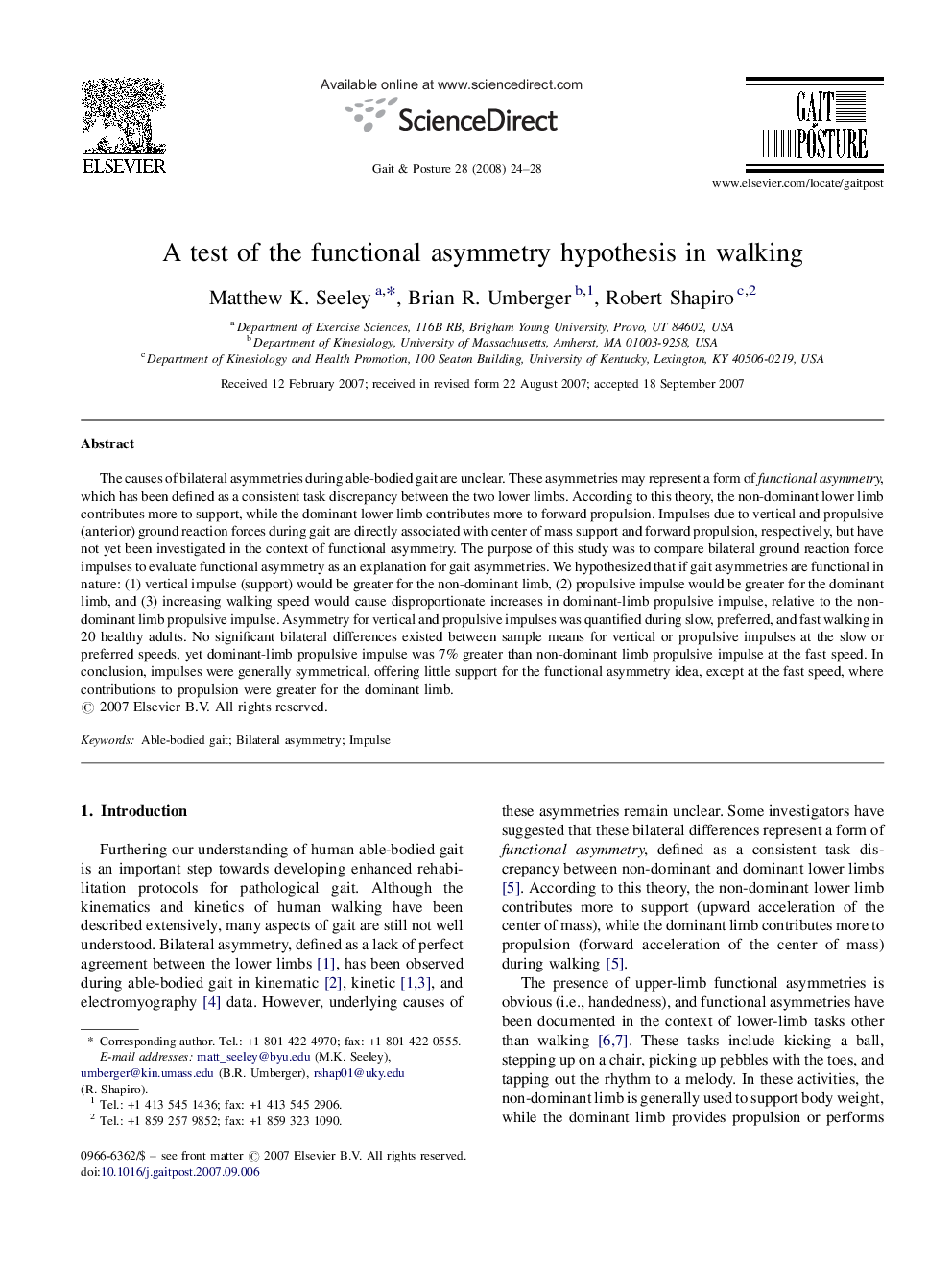| کد مقاله | کد نشریه | سال انتشار | مقاله انگلیسی | نسخه تمام متن |
|---|---|---|---|---|
| 4057823 | 1265702 | 2008 | 5 صفحه PDF | دانلود رایگان |

The causes of bilateral asymmetries during able-bodied gait are unclear. These asymmetries may represent a form of functional asymmetry, which has been defined as a consistent task discrepancy between the two lower limbs. According to this theory, the non-dominant lower limb contributes more to support, while the dominant lower limb contributes more to forward propulsion. Impulses due to vertical and propulsive (anterior) ground reaction forces during gait are directly associated with center of mass support and forward propulsion, respectively, but have not yet been investigated in the context of functional asymmetry. The purpose of this study was to compare bilateral ground reaction force impulses to evaluate functional asymmetry as an explanation for gait asymmetries. We hypothesized that if gait asymmetries are functional in nature: (1) vertical impulse (support) would be greater for the non-dominant limb, (2) propulsive impulse would be greater for the dominant limb, and (3) increasing walking speed would cause disproportionate increases in dominant-limb propulsive impulse, relative to the non-dominant limb propulsive impulse. Asymmetry for vertical and propulsive impulses was quantified during slow, preferred, and fast walking in 20 healthy adults. No significant bilateral differences existed between sample means for vertical or propulsive impulses at the slow or preferred speeds, yet dominant-limb propulsive impulse was 7% greater than non-dominant limb propulsive impulse at the fast speed. In conclusion, impulses were generally symmetrical, offering little support for the functional asymmetry idea, except at the fast speed, where contributions to propulsion were greater for the dominant limb.
Journal: Gait & Posture - Volume 28, Issue 1, July 2008, Pages 24–28